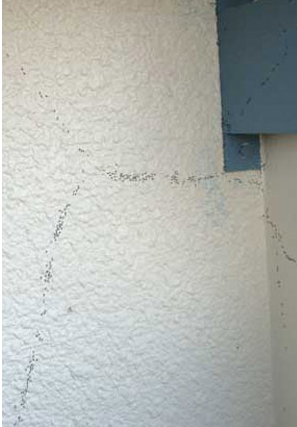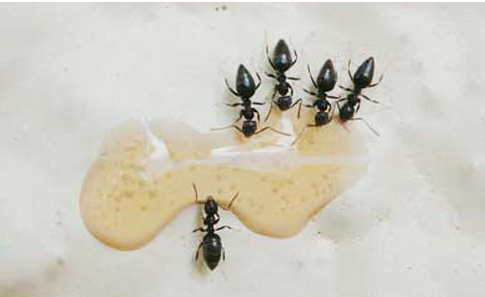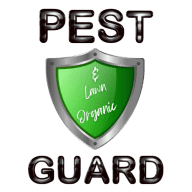Table of Contents
- 1 White-Footed Ant Control in Brevard & Indian River County
- 1.1 What Makes White-Footed Ants So Tough?
- 1.2 Why Homeowners on the Space & Treasure Coast Trust Me:
- 1.3 What Are White Footed Ants?
- 1.4 How I Professionally Eliminate White-Footed Ants:
- 1.5 Want to Try Getting Rid of White-Footed Ants Yourself?
- 1.6 Let Me Handle It for You
- 1.7 FAQs About White Footed Ant Control
White-Footed Ant Control in Brevard & Indian River County
Beachside Pest Control That Actually Works (And Lasts)
White Footed Ant Control: If you’re battling white-footed ants on Florida’s Barrier Island, Beachside, or anywhere across Brevard or Indian River County, you’re not alone — and you’ve come to the right place. At Pest & Lawn Organic Guard, I’m not sending out random techs. You’re getting me — an owner-operator with over 20 years of pest control experience. I’ll knock out your white-footed ant problem and if they come back, so will I — at no charge.

What Makes White-Footed Ants So Tough?
White-footed ants (Technomyrmex difficilis) don’t sting or bite, but they form massive colonies and trail for miles. Most pest control products don’t phase them, and DIY treatments often fail because:
- They nest in multiple, disconnected satellite colonies
- They prefer sweets (hello, Terro), but when the trees and plants are dripping honeydew, good luck baiting them away
- They don’t bring bait back to the colony like other ants, making long-term control tricky
Why Homeowners on the Space & Treasure Coast Trust Me:
✅ Owner-Operated Service: No rotating techs. No “we’ll get back to you.” Just direct help from someone who knows your neighborhood and your pests.
✅ Beachside Pest Control Expertise: From Melbourne Beach to Vero, I know how ants behave in our coastal environment.
✅ No Charge Return Visits: If they come back, I come back. No extra cost.
✅ Plant & Tree Treatments Included: I treat your bushes, palms, and trees — not just your house. That’s often where the problem starts.
✅ Long-Term Solutions: I stop the ants at the source — including the aphids, scales, and other honeydew-makers fueling them.
What Are White Footed Ants?
White footed ants get their name from their distinct white feet (tarsi) and black-to-brownish-black bodies.
These ants are primarily found in the southern half of Florida, and while they don’t bite or cause structural damage, they are considered a significant nuisance pest.
One of the reasons they are so difficult to control is due to the size of their colonies and their ability to spread from house to house.
They’re often transported to properties via new plants and mulch from landscaping projects, so your beautiful new yard can unintentionally become a haven for them.

How I Professionally Eliminate White-Footed Ants:
🌿 Step 1: Eliminate Their Food Source
White-footed ants love honeydew — the sugary poop excreted by insects like:
- Aphids
- Scale insects
- Mealybugs
These pests live in your shrubs, trees, and palms. If you don’t treat those plants, the ants will keep coming back.
That’s why I use:
- Systemic root drenches and foliar sprays to kill scale, aphids, and other honeydew-makers
- Long-lasting residuals to protect the plants for weeks after treatment
🐜 Step 2: Target the Ant Colonies Directly
I apply:
- Granular baits around trails and nests
- Liquid baits in strategic interior and exterior locations
- Non-repellent foundation treatments so the ants walk through it, bring it back, and unknowingly share it with the colony
🌴 Step 3: Treat the Whole Yard
We treat:
- Trees and tree crotches (where ants hide in rot or cavities)
- Hedges and mulch beds (a favorite nesting spot)
- Areas around irrigation, AC condensers, or any consistent moisture
Want to Try Getting Rid of White-Footed Ants Yourself?
No problem! Here’s a DIY guide I put together for folks in Brevard and Indian River Counties:
🛠️ Phase 1: Immediate Action & Assessment
1. Identify the Source:
- Track their trails. They love:
- Mulch beds
- Trees touching the roof
- Moist areas like around AC units
- Inside attics or wall voids
2. Deploy Terro Liquid Ant Baits:
- Get from a local hardware or home store
- Place near trails and high activity areas
- Important: Don’t spray the ants near the bait!
- Let them feed undisturbed and replenish the bait often
3. Clean Up Food Sources:
- Crumbs, pet food, sticky counters — wipe it all down
- Use a vinegar-based or mild cleaner
🌱 Phase 2: Long-Term Prevention
1. Trim Trees and Bushes:
- Cut back anything touching your home
- Ants use branches as highways into your house
2. Mulch & Debris Management:
- Keep mulch thin and 12″ away from your foundation
- Remove piles of leaves, palm fronds, and wood
3. Moisture Control:
- Fix leaky pipes, hoses, gutters, and downspouts
4. Barrier Treatment (Optional but Smart):
- Use a non-repellent insecticide like Taurus SC or Alpine WSG
- Spray around foundation, doors, and windows
- Caution: Follow all label instructions
- Best results? Hire a pro.
5. Keep Monitoring:
- Even if they disappear, keep checking
- Replace bait as needed
- Stay on top of tree health and landscape maintenance
🚨 Important Reminder:
If you have rotting trees, plants with scale or aphids, or see black sooty mold on your leaves, that’s your real problem. The ants aren’t just looking for sugar — they’ve got an all-you-can-eat buffet in your yard.
Terro alone won’t fix it. It’s like handing out poison shots at a party when everyone’s drinking free honeydew cocktails. 🍸
Would you drink poison if there was delicious honeydew on tap? Yeah… me neither.
Let Me Handle It for You
I offer full-property treatments that include:
- Spraying trees, bushes, and mulch beds
- Eliminating honeydew-producing pests
- Ant baiting and colony suppression
- Foundation and barrier protection
Starting at $179, with follow-ups included at no charge if ants return.
👉 Ready to Stop the White-Footed Ant Madness?
Whether you’re in Melbourne Beach, Satellite Beach, Vero Beach, or Barefoot Bay, I’ve got your back.
📞 Call or Text Today 321-704-0434
Let’s reclaim your home from these persistent pests — for good.

